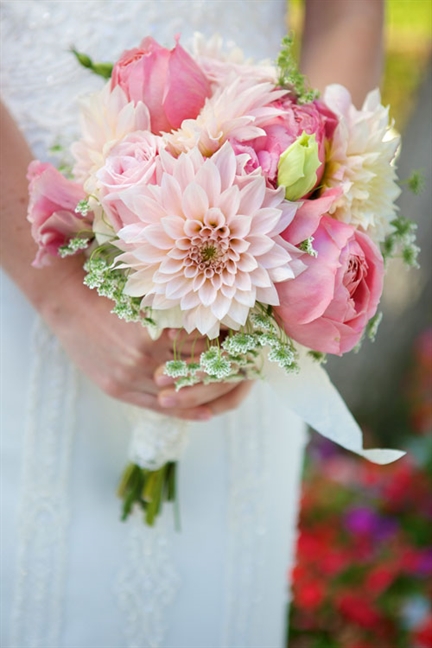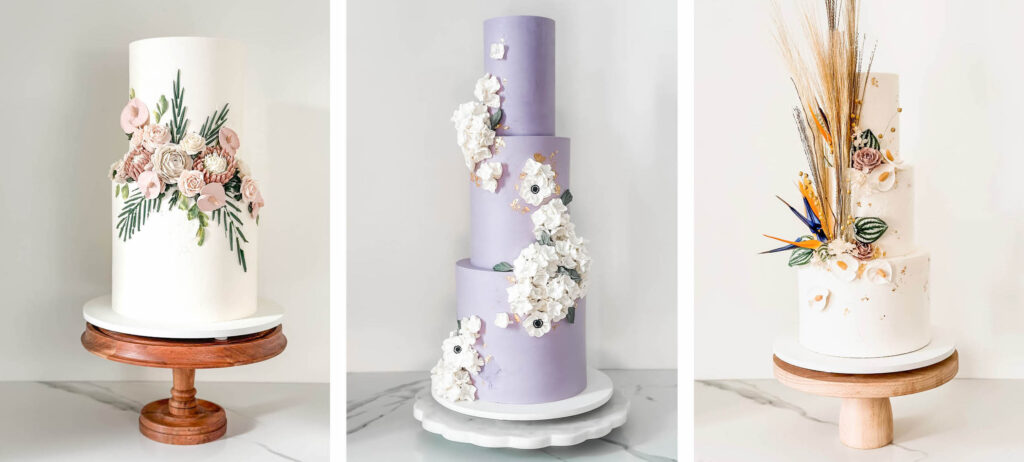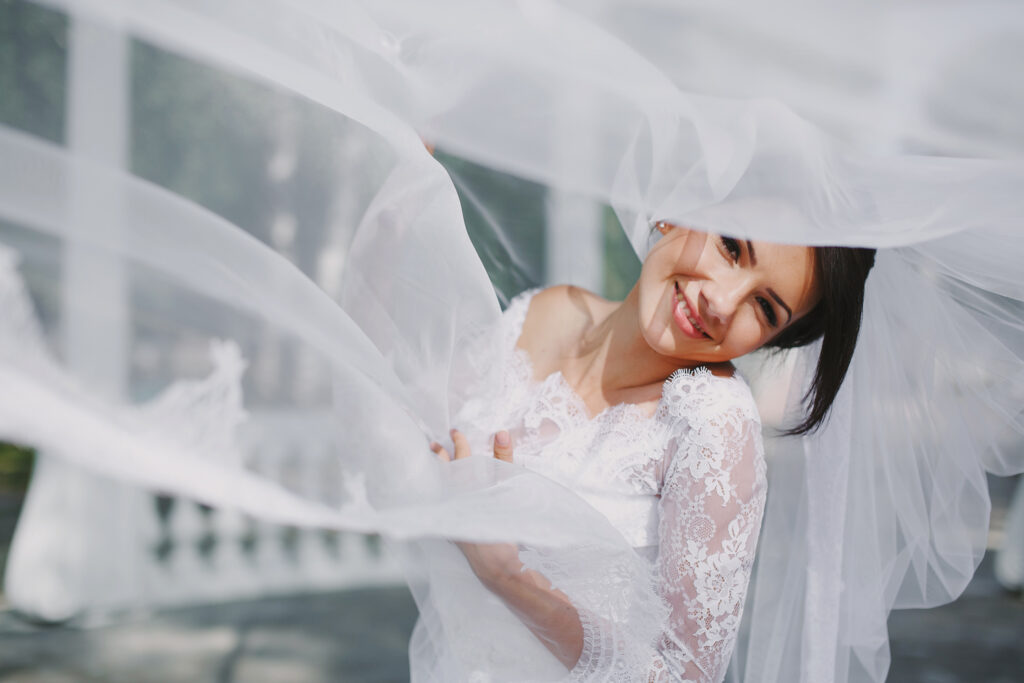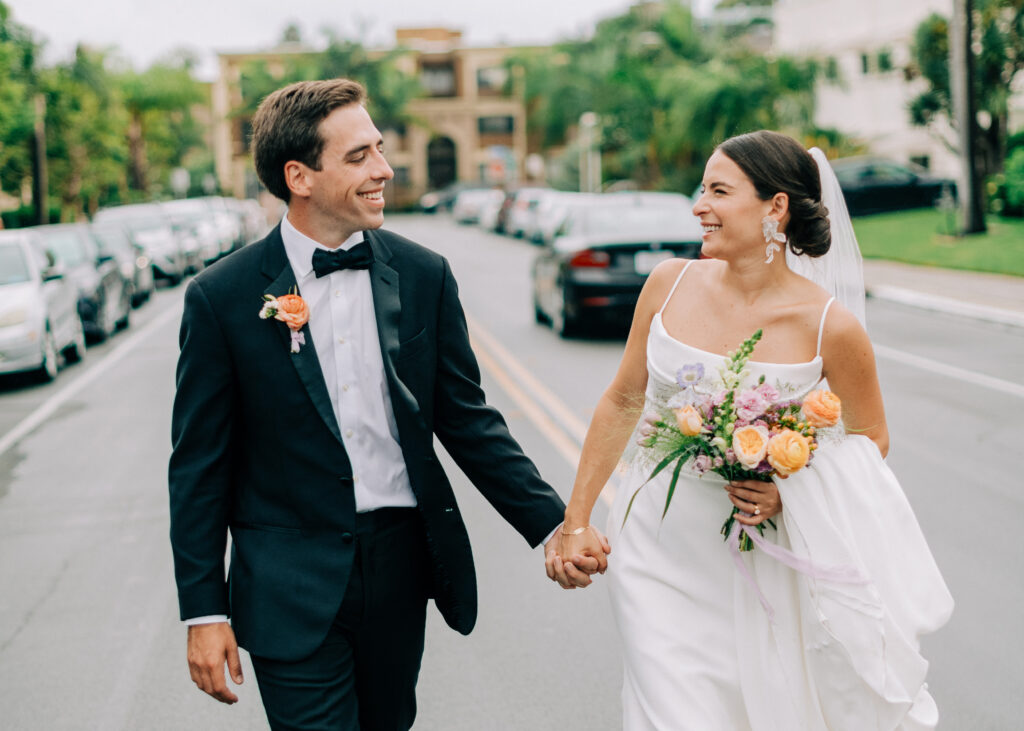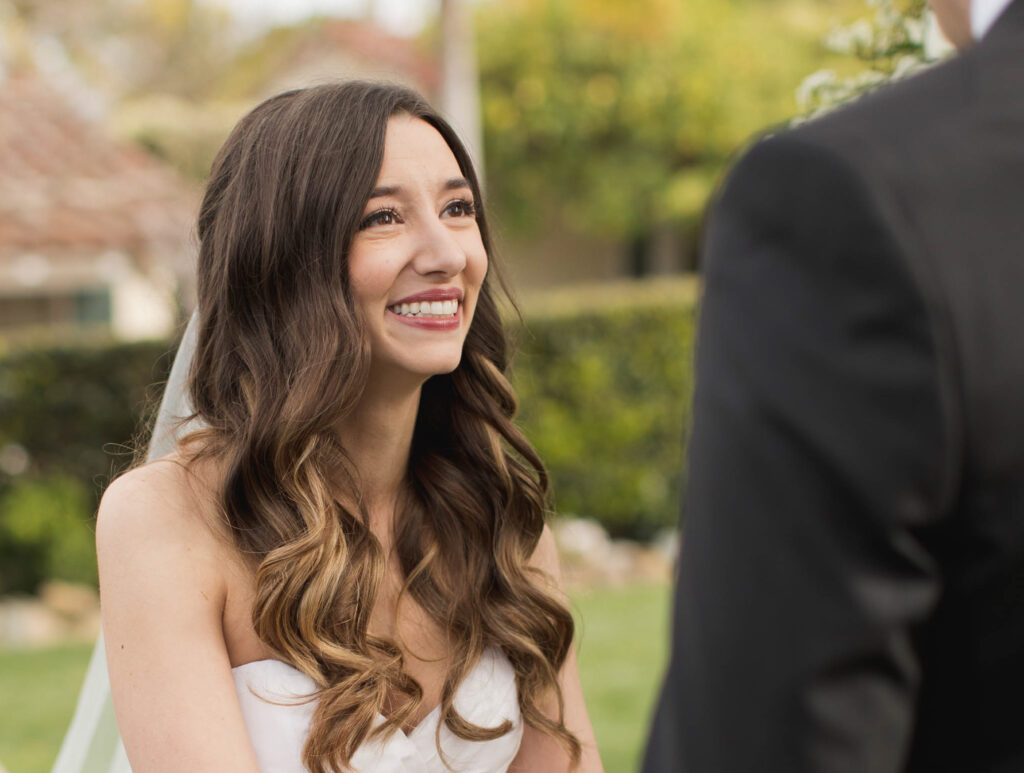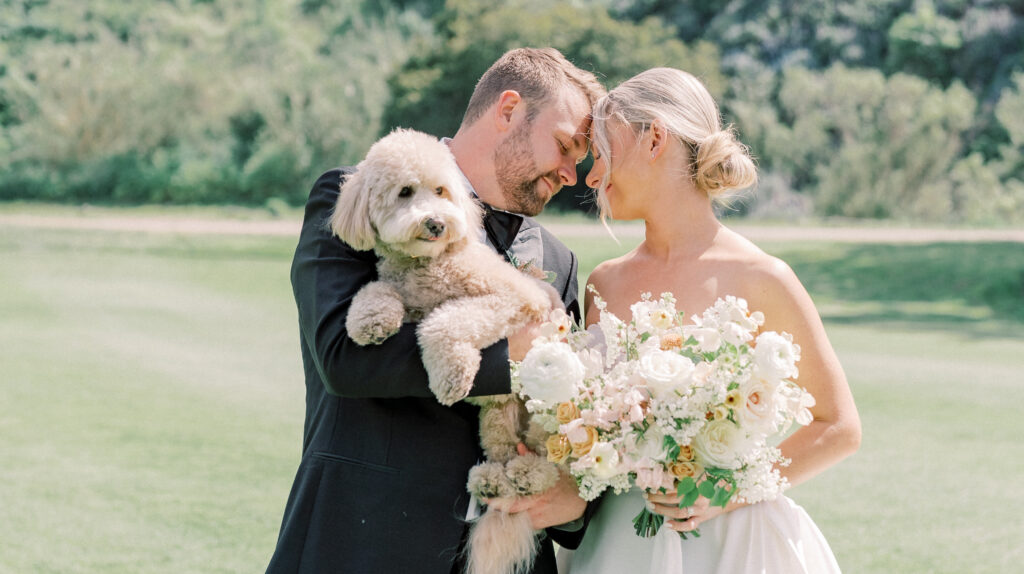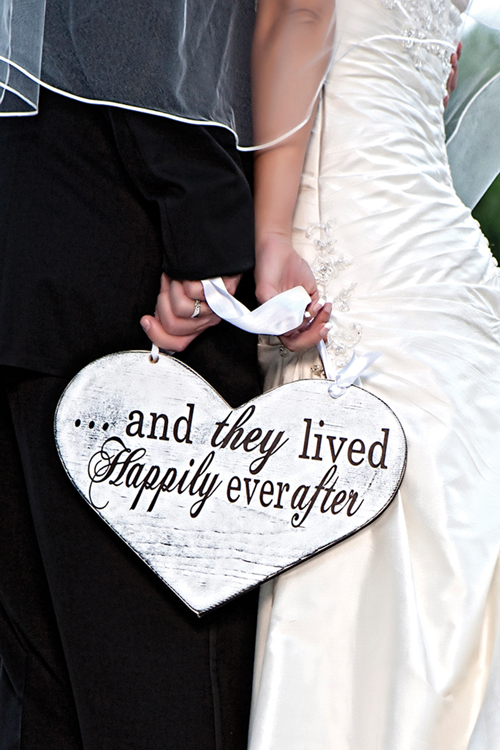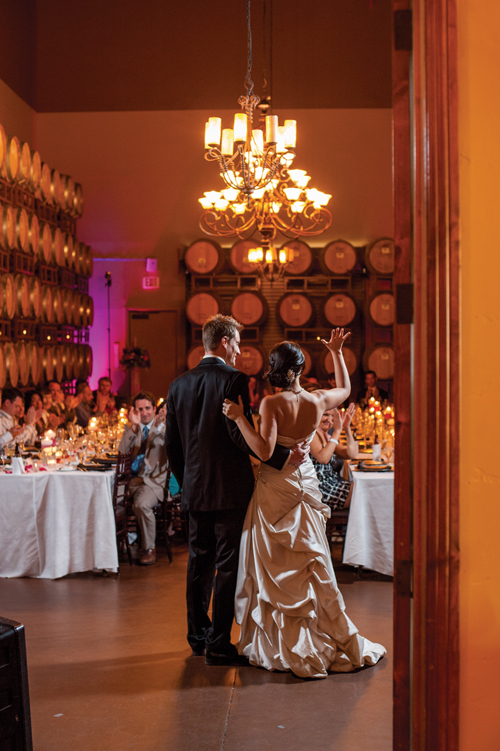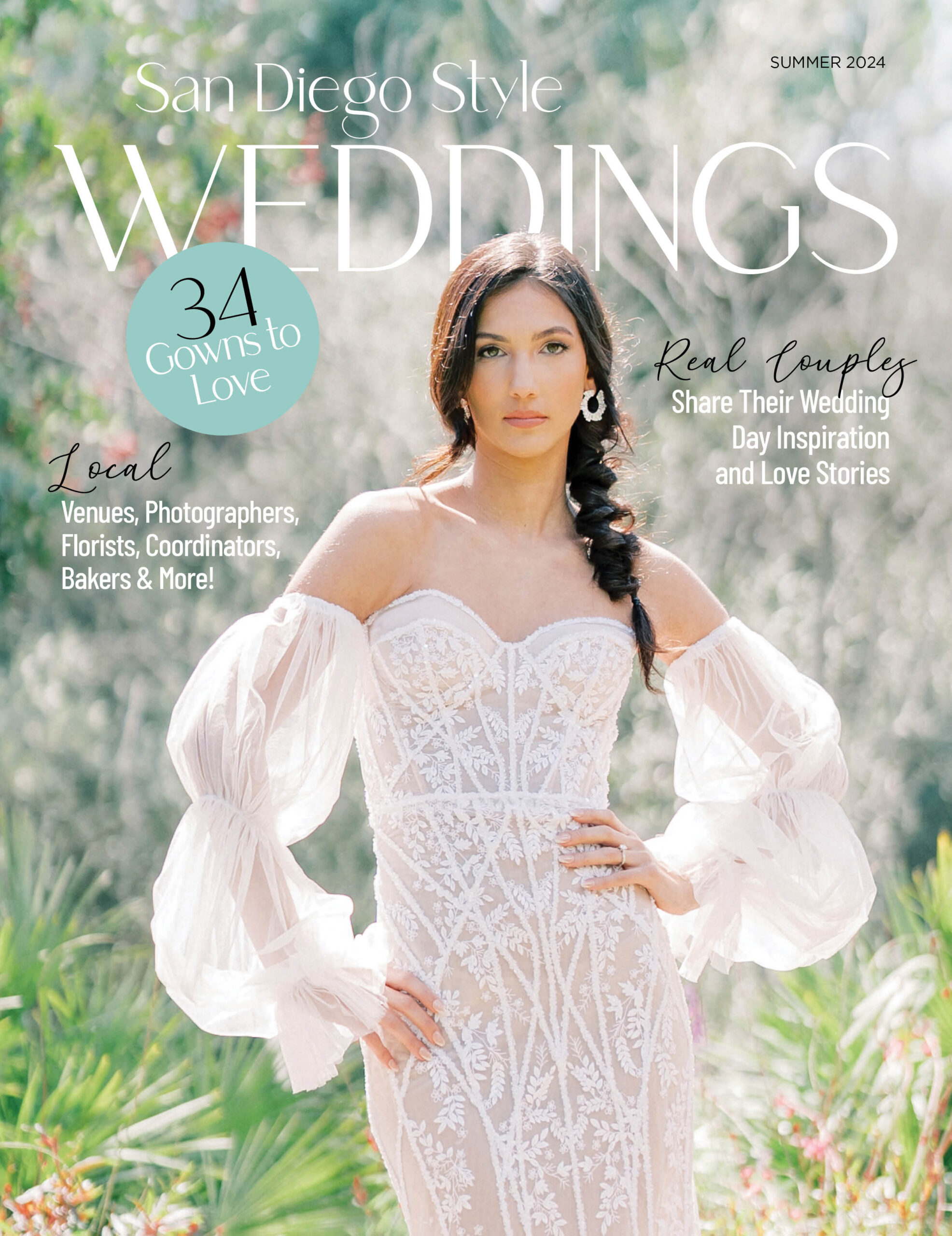For almost as long as there have been weddings, flowers have played an important role in the celebration. In selecting the flowers for your bridal bouquet, you’ll want to consider blooms that best express your personality, complement your wedding gown, and tie in with the general look and theme you’ve selected for the day. Here is a guide to the different styles of bouquets available, and how to get the perfect bridal flowers for your perfect day.
SHAPES AND STYLES
When you see a bouquet that appeals to you, ask yourself what you like about it; is it the shape, size, color, style, or the way the stems are gathered with a beautiful satin ribbon? To help you select the bouquet that will blend seamlessly with the other elements of your wedding, here is a breakdown of traditional bouquet shapes and styles.
Cascade
A cascade bouquet, also called a “shower” bouquet, is very formal and the most traditional bridal bouquet. Like a waterfall, this bouquet flows and is designed to gently cascade downward. This bouquet is often designed with larger flowers at the top, using smaller blooms as it begins to taper down and land gracefully over the bride’s hands. Lisianthus, lilies of the valley, stephanotis, dendrobium orchids, and other smaller flowers are commonly used in this shape of bouquet, along with accents of trailing ivy, vinca, or other delicate greenery. If you are wearing a full-skirted or ball gown-style wedding dress, this shape of bouquet may work for you. However, if you are a very petite woman, another shape of bouquet may be a better choice.
Composite
If you’re looking for a truly unique look in your wedding flowers, and you can’t find a particular variety of flower that appeals to you, a composite bouquet might be the perfect choice. This intricate creation is composed by taking individual petals from flowers (such as amaryllis, roses, or lilies), wiring them together on a single stem and creating the look of one giant bloom. This style of bouquet would be the ideal complement to a simple gown with little ornamentation, or one with a very sleek silhouette.
Hand-Tied
For this more relaxed style of bouquet, a variety of blooms that tie in with the wedding theme are wired or loosely gathered together and tied with a satin ribbon or a combination of ribbon and lace. Some popular flower varieties for this style of bouquet are French tulips, day lilies, coneflowers, purple statice, lisianthus, stem roses, and other hardy garden flowers. With its natural, just-picked from the garden look, this bouquet is a nice choice for an informal wedding.
Nosegay
A combination of simple style and elegance, the nosegay is a densely packed mound of flowers and greenery. When choosing flowers for a nosegay, compact blooms such as roses, tulips, peonies, hydrangeas, calla lilies, and ranunculus work best. These blooms may be mixed, or for a simple look, you can stick to just one variety. An ideal choice for any style of wedding, a nosegay bouquet can be dressed up or down depending on the flowers you choose and how it’s tied together with a wire, ribbon or other stem treatment.
Pageant
The pageant bouquet, also known as a “presentation” bouquet (think of the flowers presented to Miss America when she is crowned), is a bunch of long-stemmed flowers that the bride carries cradled in her arms. A pageant bouquet can be as simple or elaborate as you’d like, depending on the style and formality of your wedding. Some of the best floral choices for this type of bouquet are those with long stems or branches such as, calla lilies, roses, delphinium, tuberose, lisianthus, or French tulips. The blooms are then secured together with a beautiful satin or fabric ribbon. However, when selecting the flowers for your pageant bouquet, make sure the blooms are not longer than what can fit comfortably along the length of your lower arm.
Pomander
A less-traditional bouquet, the pomander is a small, compact bloom-covered ball that is usually four to six inches in diameter, and then suspended from a ribbon that is worn around the wrist. This is a good choice for the bride who wants her hands to be free. A classic floral choice for a pomander is roses, but it may also be made with hydrangeas, delphinium, dendrobium orchids, or any other flowers suggested by your floral designer. While a pomander may not be the look for you, it’s an adorable alternative for junior bridesmaids or flower girls. Just remember to have it sized accordingly so its shape is appropriate for their age and size.
Posy
Similar to the nosegay but smaller in size, the posy bouquet is perfect for a petite bride with delicate hands, or for a bridesmaid’s bouquet. When selecting flowers for a posy, those with smaller blooms are ideal, such as spray roses, grape hyacinths, ranunculus, and pansies. However, some large-headed flowers such as gardenias or peonies can also make quite an impact.
Round
The classic round bridal bouquet is usually compiled of large flowers that are loosely arranged. This shape and style of bouquet is a good choice for a formal wedding, or for the bride who wants a look less conspicuous than a cascade bouquet, yet bolder than a simple nosegay. Many varieties of flowers will work in the round bouquet, but some popular choices are roses, tulips, lilacs, stephanotis, hydrangeas, day lilies, peonies, and seeded eucalyptus.
OTHER CONSIDERATIONS
When selecting your bridal bouquet, you should think of it as another accessory in the complete wedding package. You want it to complement your personality, proportions, and attire while remaining in the general aesthetic theme of the day. So, after you consider the different shapes of bouquets, here are some other basic considerations to factor in before making your final choice.
Color
In choosing the right color combination for a bouquet, consider your own personal taste, but also the season, the time of day of the ceremony, and the atmosphere of your ceremony location. While all-white bouquets are the most traditional choice for brides, accents of color or an all-color bouquet are also accepted and beautiful options.
Body type: In general, a voluptuous or taller bride should select a bigger style of bouquet, because a small nosegay might seem out of proportion. Petite brides should pass on the grandiose bouquets and opt for something smaller so they are not lost behind a sea of flowers. And the average size bride should select a medium-sized bouquet.
Gown
When determining the style and shape of your bouquet, you also want to consider the scale of your gown. A common rule to follow is; the bigger the gown, the bigger the bouquet. A ball gown should be able to hold its own against an overflowing cascade bouquet, however, a simple sheath gown would not. When you meet with your floral designer, show them a photo of your dress and they will be able to offer some suggestions for the style and shape of bouquet that’s right for you.
In the end, as you strive for your picture-perfect look and consider your options, keep in mind that while your wedding flowers are an important part of your bridal look, your guests will want to actually see you walking down the aisle, not just your bouquet.
